Search
Remove Ads
Advertisement
Summary 
Loading AI-generated summary based on World History Encyclopedia articles ...
Search Results
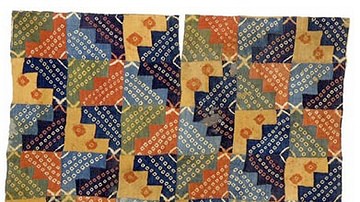
Definition
Wari Civilization
The Wari civilization flourished in the coastal and highland areas of ancient Peru between c. 450 and c. 1000 CE. Based at their capital Huari, the Wari successfully exploited the diverse landscapes they controlled to construct an empire...

Definition
Civilization
Civilization (from the Latin civis=citizen and civitas=city) is a term applied to any society which has developed a writing system, government, production of surplus food, division of labor, and urbanization. The term is difficult to define...
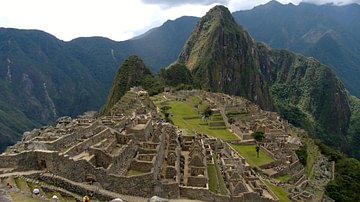
Definition
Inca Civilization
The Inca civilization flourished in ancient Peru between c. 1400 and 1533 CE. The Inca Empire eventually extended across western South America from Quito in the north to Santiago in the south. It was the largest empire ever seen in the Americas...

Definition
Indus Valley Civilization
The Indus Valley Civilization was a cultural and political entity which flourished in the northern region of the Indian subcontinent between c. 7000 - c. 600 BCE. Its modern name derives from its location in the valley of the Indus River...
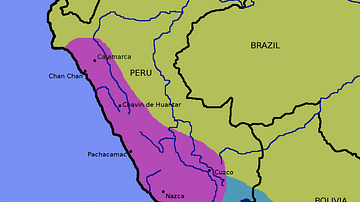
Image
The Wari Empire
A map illustrating the extent of the Wari (Huari) civilization (purple) which flourished in Peru between c. 450 and 1000 CE. The extent of the contemporary Tiwanaku culture is indicated in light blue.
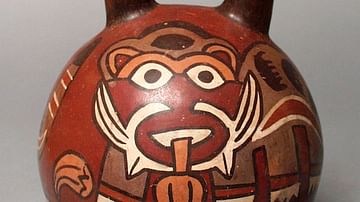
Definition
Nazca Civilization
The Nazca civilization flourished on the southern coast of Peru between 200 BCE and 600 CE. They settled in the Nazca and other surrounding valleys with their principal religious and urban sites being Cahuachi and Ventilla, respectively...

Image
Wari Tunic
A Wari tunic, Peru, 750-900 CE. The geometrical designs with idosyncratic arrangement is typical of Wari textiles. (George Washington University Museum, The Textile Museum, Washington D.C.)

Image
Wari Tapestry Panel
A Wari tapestry panel, 600-1000 CE. The design shows alternating natural and supernatural heads. The human heads wear a typical Wari tassled hat while the supernatural heads have a black headdress and they are sticking their tongues out...
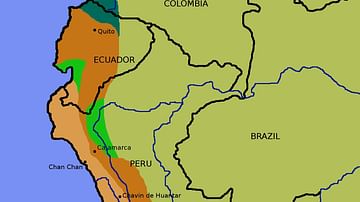
Definition
Wanka Civilization
The Wanka (also Wanca or Huanca) people occupied the highlands of ancient central Peru around Lake Junin and the Manataro, Chanchamayo and Tarma rivers. The culture flourished from the Middle to Late Horizon periods (600 CE - 1532 CE). Dwelling...
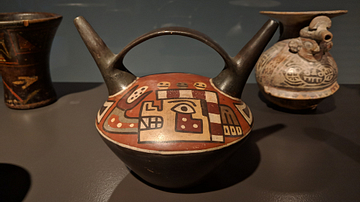
Image
Double-Spouted Wari Vessel
Pottery vessels from the Wari Civilization. Peru, 7th to 10th century CE. Fired clay.
Exhibited at Museum Rietberg, Zurich, Switzerland.